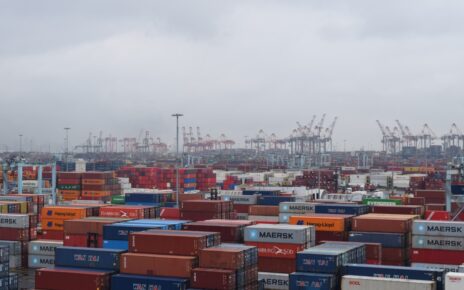Maritime Cybersecurity Best Practices. The maritime industry has witnessed a digital revolution in recent years, with the adoption of advanced technologies to enhance efficiency and streamline operations. However, this digital transformation has also made the maritime sector vulnerable to cyber threats. In an era when ships are becoming increasingly connected, maritime cybersecurity has become paramount to ensure the safety, security, and smooth functioning of vessels and ports. This article delves into maritime cybersecurity best practices to safeguard against cyber threats in an interconnected world.
Maritime Cybersecurity Best Practices
1. Risk Assessment and Vulnerability Analysis
Start by conducting a comprehensive risk assessment to identify potential vulnerabilities in your maritime operations. Assess the potential impact of cyberattacks on safety, cargo, personnel, and the environment. This will form the basis for your cybersecurity strategy.
2. Cybersecurity Awareness and Training
Invest in cybersecurity awareness and training programs for your crew and staff. Equip them with the knowledge and skills to recognize and respond to cybersecurity threats effectively. Regular training and drills can help in building a cyber-resilient workforce.
3. Secure Network Architecture
Design a secure network architecture that includes firewalls, intrusion detection systems, and encryption to protect data in transit. Segmentation of networks onboard ships can isolate critical systems from non-critical ones, reducing the risk of unauthorized access.
4. Access Control and User Authentication
Implement strict access controls and user authentication mechanisms. Ensure that only authorized personnel can access critical systems and data. Utilize strong, unique passwords, and consider multi-factor authentication for added security.
5. Patch Management and Updates
Regularly update and patch all software and firmware onboard vessels and in port operations. Vulnerabilities in outdated systems are prime targets for cyberattacks. Create a systematic process for monitoring and applying updates.
6. Incident Response Plan
Develop a comprehensive incident response plan that outlines the steps to take in the event of a cyber incident. Assign responsibilities and establish communication protocols to respond quickly and effectively to mitigate damage.
7. Security Testing and Audits
Conduct regular security testing and audits to identify weaknesses and potential vulnerabilities. Penetration testing, vulnerability scanning, and code reviews can help uncover vulnerabilities that need immediate attention.
8. Backup and Recovery
Regularly back up critical data and systems, and store backups in secure locations. Test the backup and recovery process to ensure that data can be restored in the event of a cyber incident.
9. Vendor and Supply Chain Security
Assess the cybersecurity practices of vendors and suppliers who provide equipment or services to your maritime operations. Ensure they meet your cybersecurity standards to prevent supply chain vulnerabilities.
10. Regulatory Compliance
Stay informed about international and national regulations related to maritime cybersecurity. Comply with applicable cybersecurity standards and guidelines, such as the International Maritime Organization’s (IMO) guidelines on maritime cybersecurity.
11. Continuous Monitoring and Threat Intelligence
Implement continuous monitoring of network traffic and systems for signs of suspicious activity. Utilize threat intelligence services to stay updated on emerging cyber threats and vulnerabilities specific to the maritime sector.
12. Collaboration and Information Sharing
Collaborate with industry peers, government agencies, and cybersecurity organizations to share threat intelligence and best practices. A collective approach can enhance the industry’s overall cybersecurity posture.
Conclusion
Maritime cybersecurity is no longer an option but a necessity in today’s interconnected world. The consequences of cyberattacks on the maritime industry can be severe, affecting safety, the environment, and the global supply chain. By implementing these cybersecurity best practices, maritime organizations can strengthen their defenses and ensure secure operations in an increasingly digitized environment. Vigilance, training, and a proactive approach to cybersecurity are essential to navigate secure waters in the digital age.



